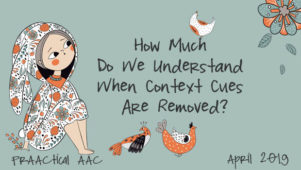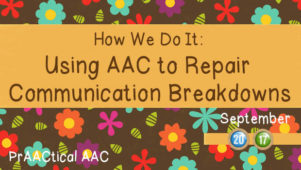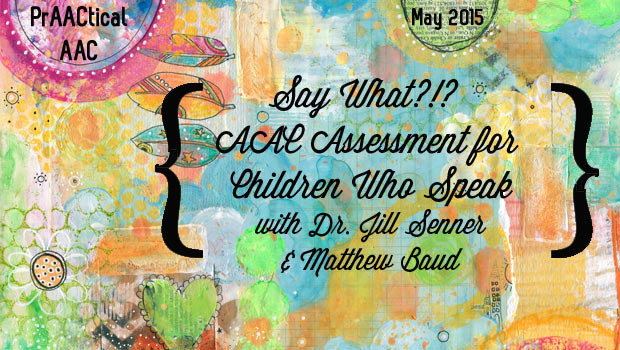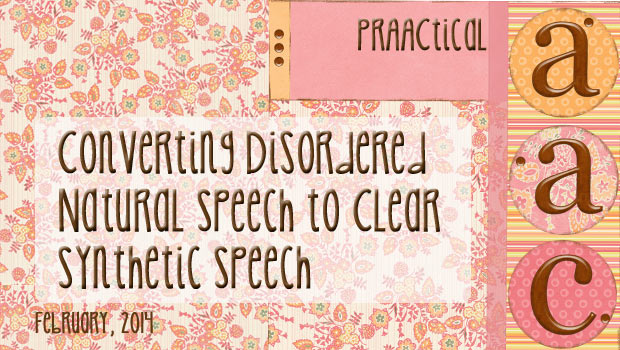Let’s Get Specific About Speech Intelligibility

When we’re writing AAC evaluation reports, compiling funding documents, and summarizing the present level of performance in IEPs, we frequently comment on speech intelligibility. In some cases, we’ve administered a standardized assessment instrument and are sharing those results. Often, though, the comments are more descriptive in nature. It is not uncommon to read documentation in which someone with articulation difficulties is described as having speech intelligibility that is mildly, moderately, or severely impaired. Those categories are pretty broad, open to interpretation, and can be quite vague.
What do we really mean when saying that someone does or doesn’t have intelligible speech?
To narrow down the meaning, we specify the two variables that have the greatest influence on how comprehensible the communicator’s speech output actually is: the context and the communication partner. Specifying whether the context is known and the partner is a familiar one, helps us better interpret the descriptors of mild, moderate, and severe.
- Unfamiliar Partner, Unknown Context: This is the toughest situation in which to make oneself understood. Basically, the AAC user is speaking on an unspecified topic to someone they don’t know.
- Unfamiliar Partner, Known Context: This is a little easier because although the partner is not familiar with the AAC user’s speech patterns, he/she is able to use the context to aid in deciphering the unclear speech.
- Familiar Partner, Unknown Context: Knowing the individual’s patterns of misarticulation can help considerably, but it’s still difficult when we don’t know the topic of conversation.
- Familiar Partner, Known Context: Knowing the communicator and the topic is the best of both worlds. This is the easiest condition for interpreting a message from someone with a speech impairment.
Adding these four conditions to our description can go a long way toward clearer, more effective communication among team members. So, next time someone tell you that a person with AAC needs has moderately unintelligible speech, ask for more information. And, consider using these categories in your own discussions of speech intelligibility as well. We can all do a little better at using precise language to describe our clinical findings.
Filed under: PrAACtical Thinking
Tagged With: documentation, report writing, speech intelligibility
This post was written by Carole Zangari





1 Comment
I am working with a preschooler (will be 5 in January). This is her 3rd year in preschool (started here at age 3). She is a verbal student with a fairly extensive vocabulary however her speech is approximately 30% intelligible. She is stimulable for corrections at the syllable and word level but minimal carryover is noted after 2 1/2 years of speech therapy. Previous therapists have implemented an apraxia approach, then a phonological approach, then a maximal pairs approach. I am currently working on final and initial consonants using hand cues for prompting target sounds (speech chick hand cues). This is working fairly well in therapy, but again not carryover. This little girl substitutes glides /j/ and /w/ for many sounds. She goes to KG next year and I feel that we need to consider some type of AAC for her. I am interested in input regarding which system to trial and a sensitive way to explain to her why we are offering a device. She is very aware of her decreased intelligibility as evident in her shying away from talking to others, turning her body away and sometimes just giving up when unable to express herself. I am open to suggestions. Thank you!